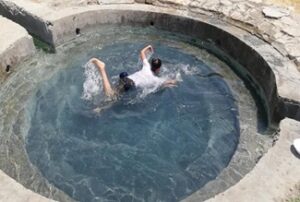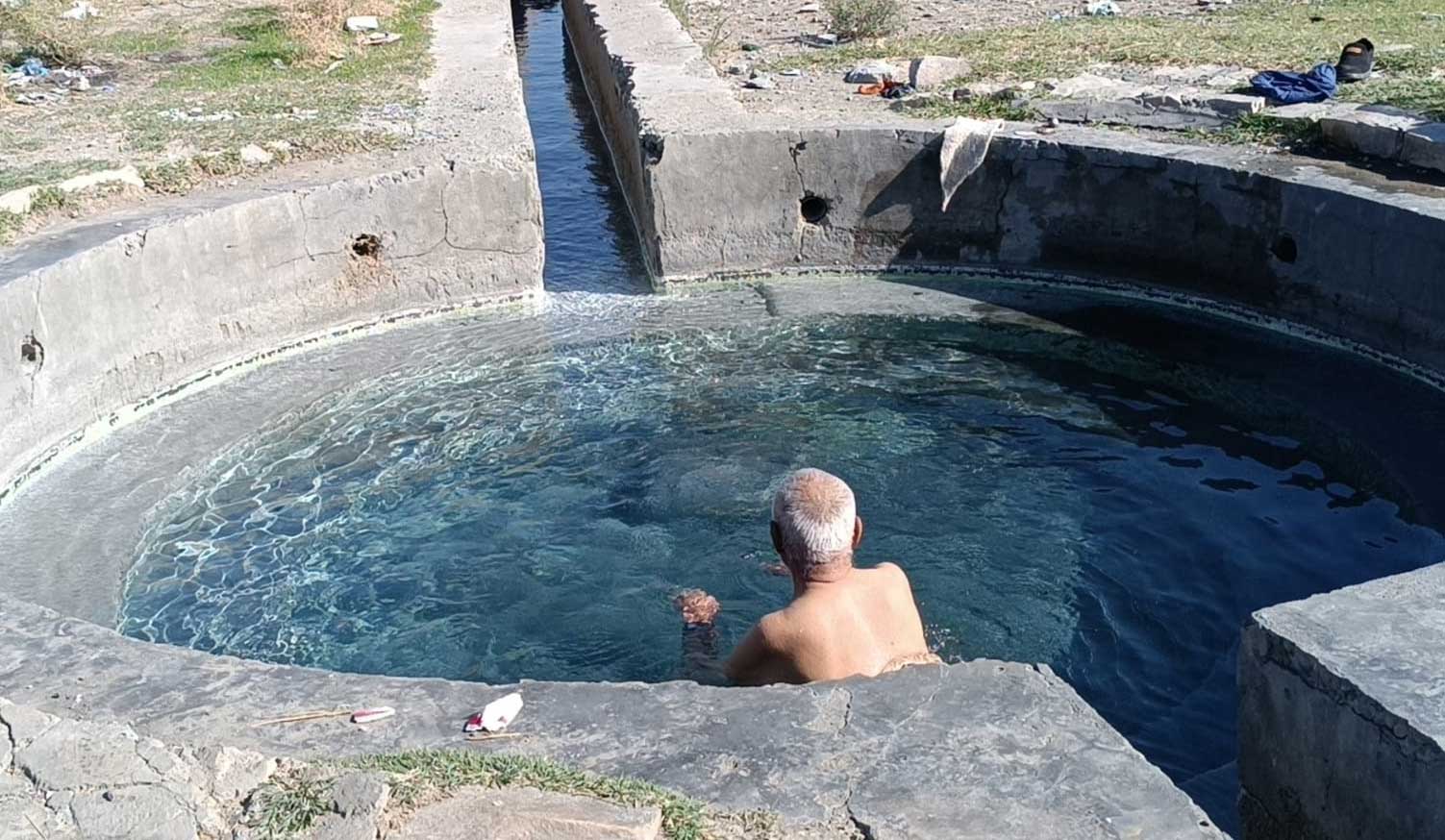Gharib Ali Salim*
Since ancient times, some individuals have visited Garaw (sulfur spring water places) for the treatment of skin diseases, particularly those with scabies conditions. This is why they are called Garaw (sulfur spring water). Scientifically referred to as mineral water, these springs are rich in dissolved minerals and have significantly higher temperatures compared to ordinary water. Their temperature can reach up to 45°C, whereas regular water typically ranges between 15°C and 30°C, they also contain high levels of dissolved minerals and salts. Unlike ordinary water, the Total Dissolved Solids (TDS) content is above 1000–2000 ppm. This makes them unsuitable for drinking, agriculture, or livestock, unlike ordinary water, which has a TDS level of 150–500 mg/L. The unique properties of these sulfur spring water stem from their deep underground sources, where the intense heat of the Earth’s core, fueled by molten volcanic material, raises the water’s temperature and mineral concentration. Preliminary research indicates that there are several natural mineral springs in the Kurdistan Region of Iraq, located across diverse geographical areas. Each spring varies in its organic and mineral composition. These springs have long been visited by people seeking relief from skin diseases, and today they have evolved into popular health tourism destinations, attracting visitors from near and far.
These springs in Kurdistan are known by locals under various names, for example Hammam, Garaw, Ganaw or Ganau. Hammam-Jalli is one of these springs which is located within the North East of Habita Sultan mountain and just 9 km, North of the city of Koya and 24 km South West of Ranya Its location to the other major cities in Kurdistan are as the following: 60 km South East of Erbil, 76 km North East of Kirkuk, 90 km North West of Sulaymaniyah and 163 km South East of Duhok.
Hammam Jalli consists of two springs with three bathing pools. The distance between the two springs is about 100 m. The first spring one is with one bathing pool. This pool is naturally made with a free surface of 5 m x 7 m and irregular depth ranging from a few centimeters to 1m. Part of developing the hammam jalli’s springs these two pools were made by the authority in the region. These pools are differing from each other in their shape and size. Bathing pool 1-spring 2 has a rectangular shape with dimensions of 5.6 m width, 6 m length and 1.5 m depth. The water of this pool discharges to pool 2 which has a circular shape with diameter 5 m and depth of 0.5 m. Bathing pool 2- is only several meters away from pool 1-spring 2 which they are connected through a concrete open channel. The water contains a mixture of substances, primarily sulfur and sulfur compounds, which make it uninhabitable for aquatic life. Despite this, the spring is widely used for the treatment of various skin diseases.

The spring attracts many tourists daily, primarily those seeking natural treatment for skin conditions such as allergies, acne, eczema, and skin burns. The water is rich in chemical and physical compounds, including sulfuric acid (H2S), calcium sulfate, hydrogen, and dissolved salts, making it unsuitable for drinking. The in-situ water temperature and the local air temperature for spring 1 and spring 2 are shown in respectively. From the stated resource it can be seen that there is a significant difference between the temperature of the water of the springs and the air of the surrounding region. The biggest difference over the period of was recorded in January (16.8 °C) and in February (17.6 °C) for spring1-spring 2 respectively. This can be explained by the fact that the air temperatures recorded in this area are the lowest during this time of the year. Other than in October, the temperature differences for both springs are greater than 9.4 °C.
Its water is high in sulfur and is used for skin diseases such as acne, skin burns and eczema, which attracts thousands of people and tourists every year. The water’s total electrical conductivity of 649-760 μS/cm. It contains various ions and compounds, including:
Chloride: 46.7 mg/L
Calcium: 190 mg/L
Sulfate: 40 mg/L
Magnesium: 100 mg/L
From the pH values of Hamam Jalli –spring 1’s water are in the range of 7.1- 7.42 and for spring 2 are in the range of 6.75 -7.27 (except March, the pH is 8.25). It has the ability to destroy germs and viruses that grow on human skin. Patients first soak themselves in the mud around the return and then wash themselves in the water, which has attracted thousands of people and tourists to the area every year.
The Garaw Jalli Sulphur Spring attracts visitors from across the Kurdistan Region, as well as central and southern Iraq and neighboring Iran. Its scenic surroundings, combined with the therapeutic properties of the water, make it a popular destination for both health and leisure tourism.
Challenges facing the Garaw Jalli
- Lack of accommodation such as hotels, motels, restaurants, cafeterias and bathing pools for women has created challenges for tourists.
- However, Lack of experienced technical staff in natural treatment (especially jelly treatment).
- Lack of training centers for teaching naturopathy.
- Weakness of the role of local tourism facilities in the return marketing of Jelly as a health tourism destination.
The importance of this water in the region is increasing day by day due to the large number of tourists who visit. If the area were developed with modern swimming pools, car parks, motels, hotels, and natural treatment hospitals, it would attract more tourists. This would lead to the economic recovery of Koya district and its surrounding areas, provide job opportunities for youth, and establish it as an exemplary health tourism destination.
* PhD Student in Tourism Marketing/ University of Sulaymaniyah, Kurdistan Region, Iraq


